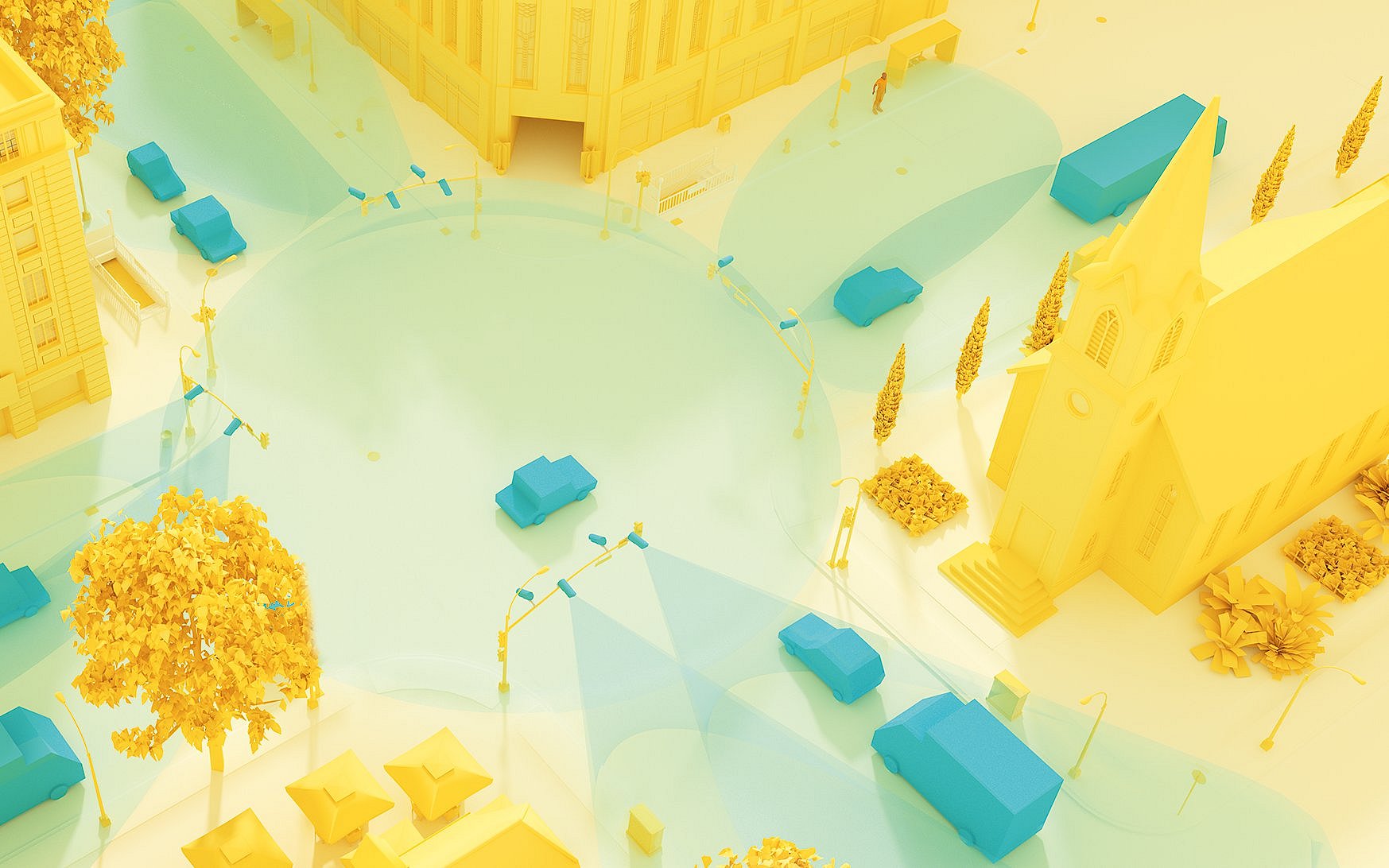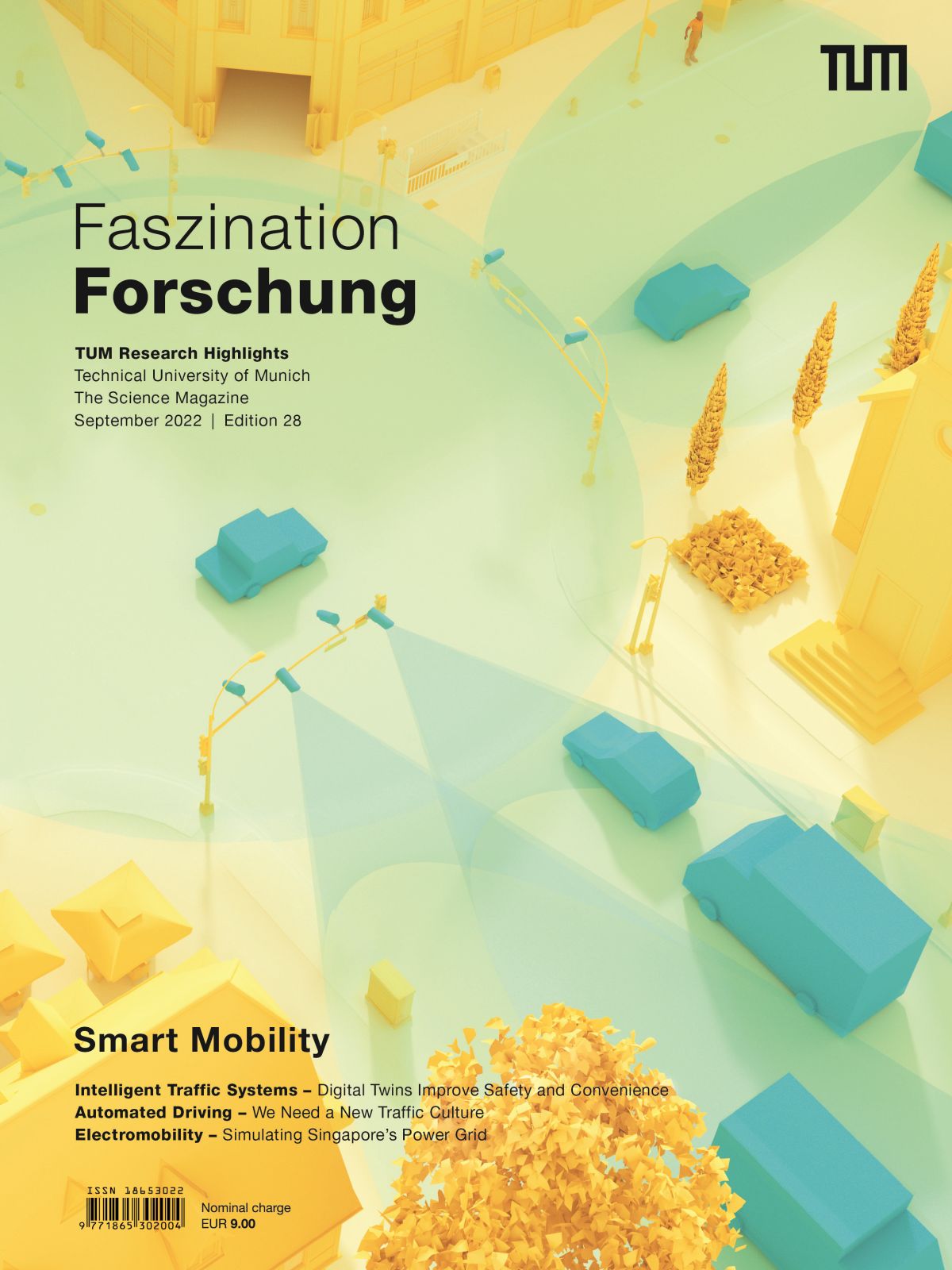“Faszination Forschung” Magazine no. 28
Smart Mobility

Contents of this issue
“We need to find different incentives”
Automotive engineer Markus Lienkamp, political scientist Miranda Schreurs and traffic planner Gebhard Wulfhorst agree that interdisciplinary thinking is the key to developing concepts for smart mobility.
Electrifying an Island Nation
Singapore hopes to pivot entirely to electromobility. A simulation program built by researchers at TUM-CREATE mimics the behavior of the power grid if high numbers of electric vehicles need to be charged.
What Kind of City Do We Want to Live In?
Street experiments around the world are trying out alternative concepts for street use. Ana Rivas is examining the conditions under which the experiments contribute to lasting transformations.
Autonomous Driving
Looking Far Ahead and Around Corners with Digital Twins
Alois Knoll leads the Providentia++ project. It depicts current road traffic in real time in a digital form, making this data available to all.
Looking into the Future
Self-driving cars must be prepared for all possible traffic situations in order to avoid accidents and collisions. Matthias Althoff develops a software which anticipates traffic situations within a fraction of a second – thus enabling the car to avoid collisions.
Deceptively Realistic Images of People Who Don’t Actually Exist
Neural nets in self-driving cars require vast quantities of images of road traffic to learn how to recognize people. A research group led by Laura Leal-Taixé has found intriguing solutions to generate images of people without raising any data protection concerns.
Automated Driving Will Require a New Traffic Culture
For automated transport to be successful, the complex interaction between humans and vehicles must be considered. Klaus Bogenberger and his Chair investigate this within the TEMPUS project.
All Daily Needs Within 15 Minutes
In sustainable cities, everything needs to be easily accessible, ideally within 15 minutes by bicycle or on foot. The start-up Plan4Better offers a planning software that can help make this happen.
How Much Electromobility Do You Need?
Would e-mobility be a sensible choice for me or my company? The digital consultancy tool WATE has answers.
Shrink Your Travel Footprint
Will future travel avoid burdening the environment? Agnes Jocher investigates alternative aviation fuels and the visionary high-speed Hyperloop system.
In Every Issue
Editorial
Authors
Masthead
Technical University of Munich
Corporate Communications Center
- Editorial team Faszination Forschung
- faszination-forschung@zv.tum.de
- presse@tum.de
- Teamwebsite

